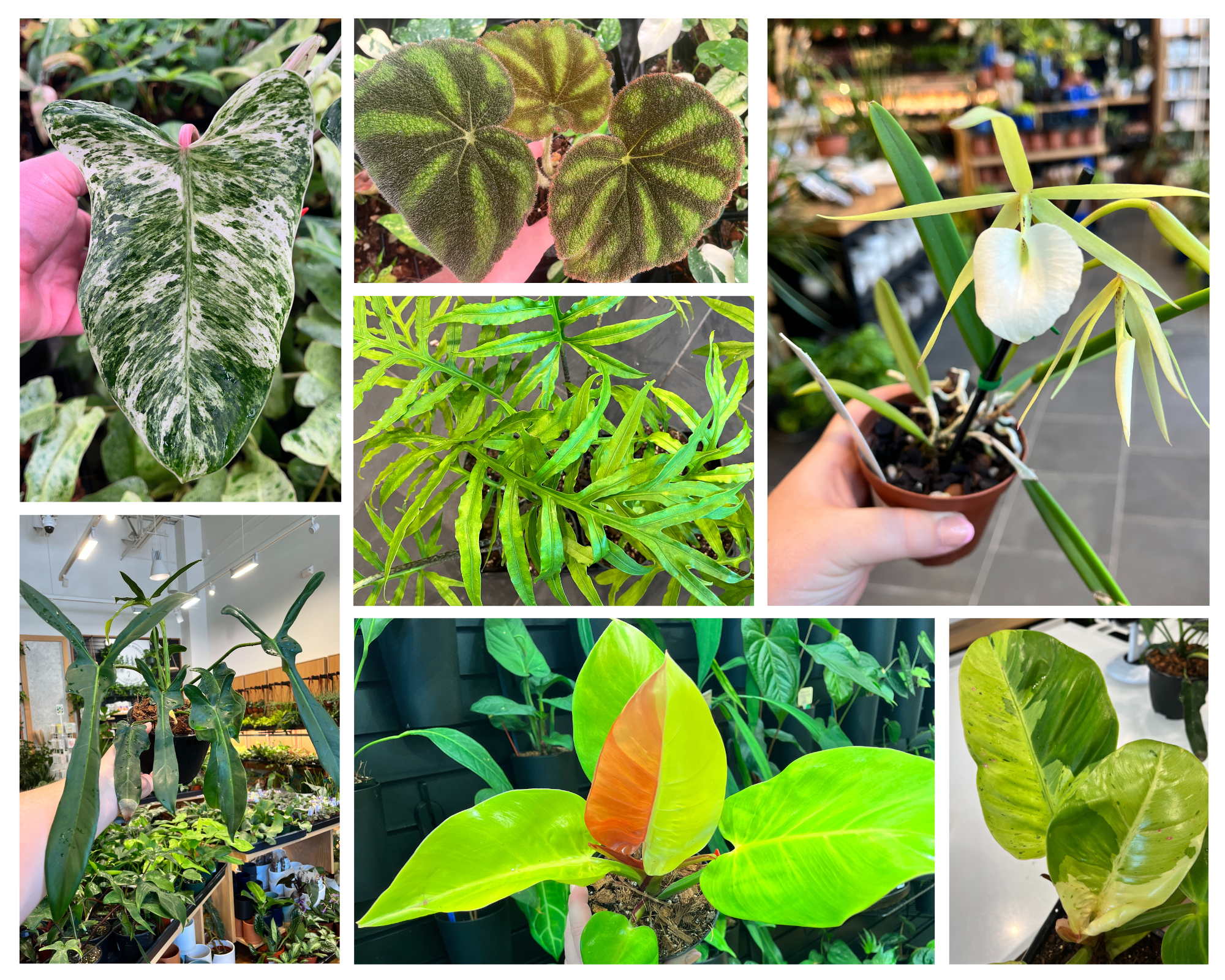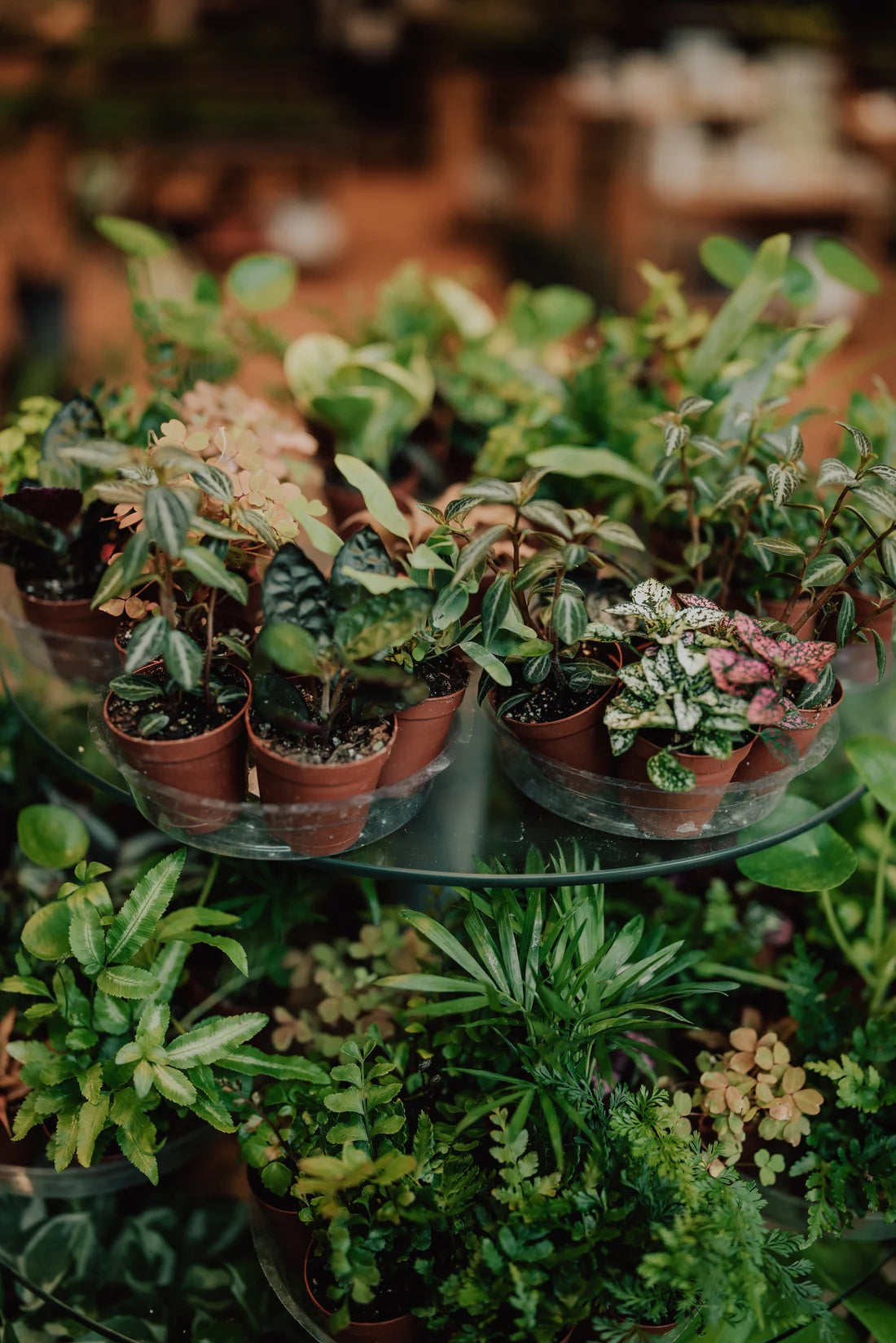
A lover of plants or looking to gift one to a fellow plant collector? Well check out the new and unique plants hitting our store this week that you'll want to check out and add to your Forrest! See what we did there ;)
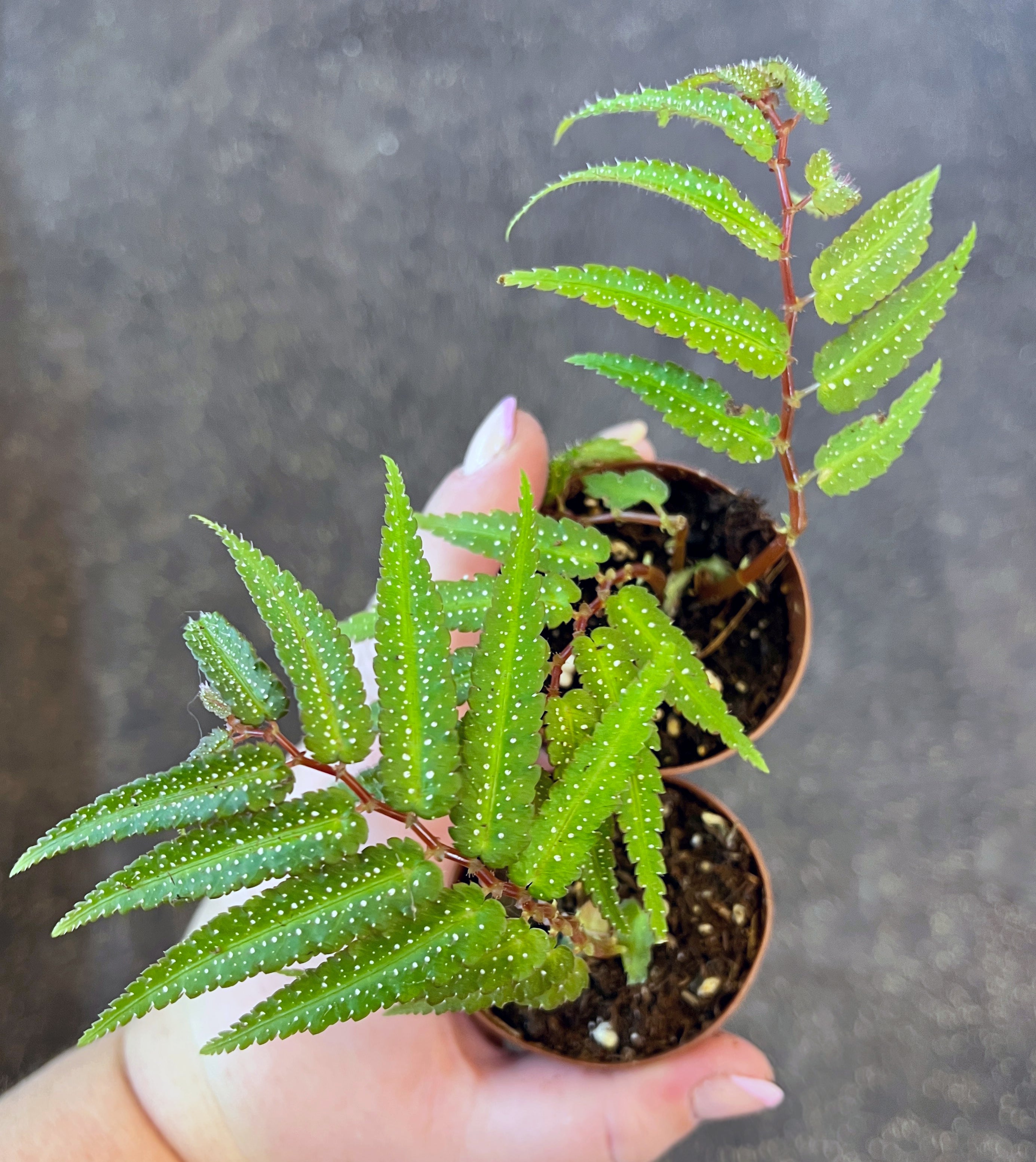
Begonia Pteridiformis Spotted
While not all plant lovers are begonia lovers, it's hard to deny the cool-factor of the Begonia Pteridiformis. There are two forms of this species that are commonly found in circulation: ‘red form’ with dark green leaves and red stems and green, with light green spotted leaves. The spotted green form (pictured) is dotted with white spots and has a single hair growing out of each dot.
It requires a higher ambient humidity (70-80%) and is considered a compact growing making it a perfect choice for terrariums or greenhouses.
Fun Fact: It is named for the unique arrangement of leaves that resemble a fern (Pteridi) at a quick glance.
*coming soon - keep your eyes peeled for it in our weekly restock*
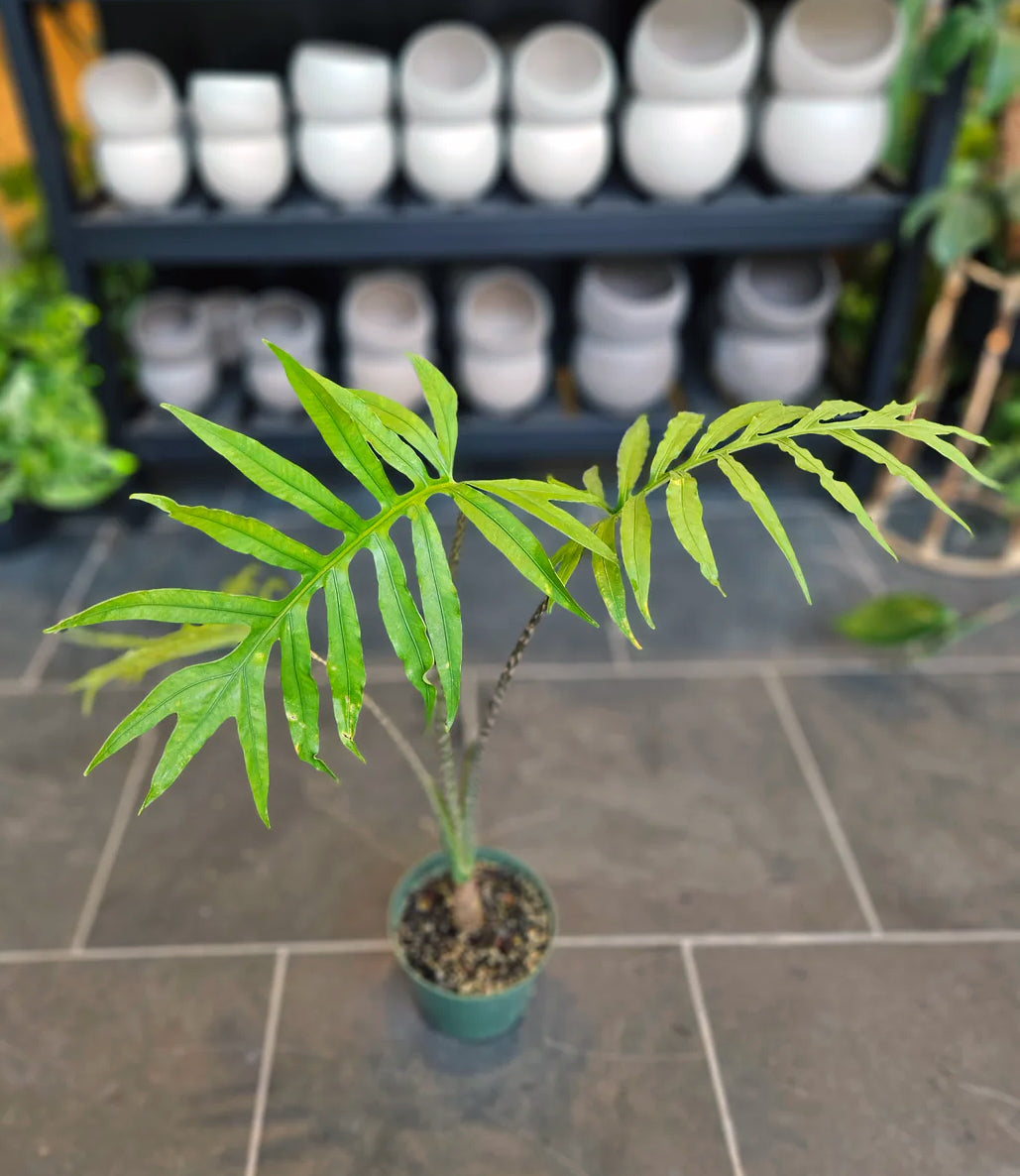
Alocasia Brancifolia
Being a hybrid of Philodendron Xanadu and Alocasia Zebrina, the Alocasia Brancifolia has got it all with its lobed leaves and super striped petioles and stem!
Aim to keep the soil consistently moist, but not overly saturated. Water the plant when the top inch of the soil feels dry, adjusting the frequency based on the surrounding temperature and required high humidity.
It's important to note that Alocasia Brancifolia is toxic if ingested, so keep it out of reach of curious pets or children.
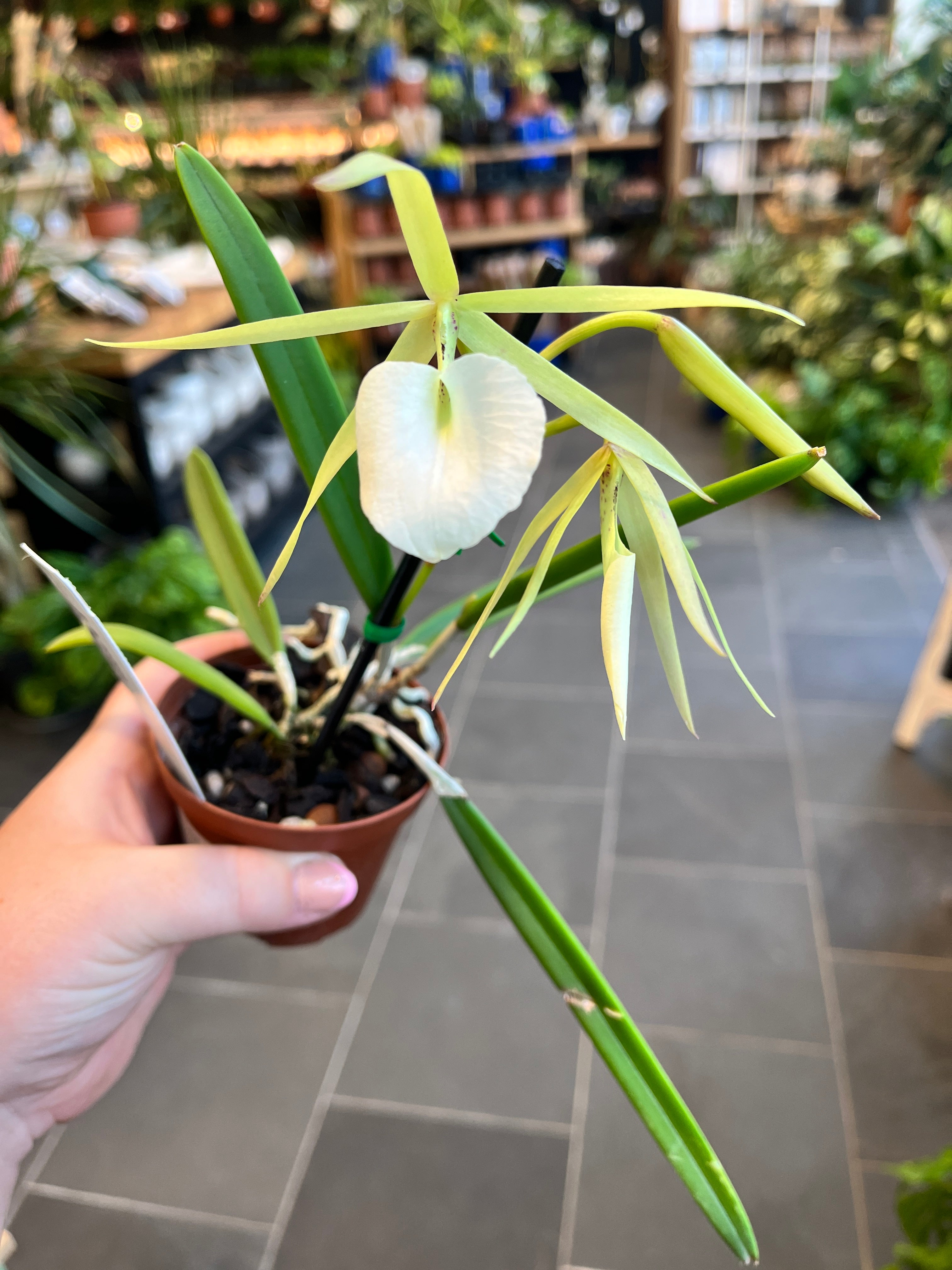
Cattleya B. Nodosa (4N x 'Remar')
Can you even with these flowers?! Cattleya is a genus of orchids, pictured here specifically is the hybrid of 4N and Remar.
Cattleya is a species of epiphtyic and lithophytic orchids native to Central and South America. This orchid is known for it's stunning flowers. Cattleyas grow on the rocks and trees and absorb moisture from the warm, humid conditions of the rainforest. The goal is to mimic these conditions as much as possible.
Fun Fact: Currently, there are 46 recognized species and 35 natural hybrids of the Cattleya alone with continued species/hybrids being discovered every year.
Philodendron
-

Philo Red Moon
Shop Philodendron Red MoonPhilodendron Red Moon, the celestial superstar of the houseplant world! Its vibrant red leaves, shaped like lunar crescents, will add an otherworldly charm to any plant collection.
In general, this plant thrives best in bright indirect sunlight, well-aerated soil, and mildly moist soil but never dry out totally with at least 50% humidity.
Fun Fact: All Philodendron Red Moons are grown from cuttings or tissue cultures due to their variegation mutation.
-

Philo Emerald Ice
Step aside, ordinary plants, because the Philodendron Emerald Ice is here to steal the spotlight! This is a brand new one for us and still some unknowns about its origins but look at those leaves, how could we resist?!
Known for its easy-care nature, this plant is a great for plant lovers of all levels. It thrives in bright, indirect light but can tolerate lower light conditions. Allow the top inch of soil to dry between waterings to prevent overwatering.
*coming soon - keep your eyes peeled for it in our weekly restock*
-

Philo Longilobatum
Shop Philodendron LongilobatumFunky leaf alert! Philodendron Longilobatum stands out in a room with its bizarre and beautiful lobed leaves. The petioles are particularly elongated which helps it stretch out to receive light as it grows as an epiphyte in nature.
Like many Philodendron species, the Longilobatum is a natural climber. Given the opportunity, it will happily trail or climb up a support such as a moss pole or trellis.
Fun Fact: Its full name is Philodendron Longilobatum ‘Leylano Miyano’ which is named for naturalist Leland Miyano.
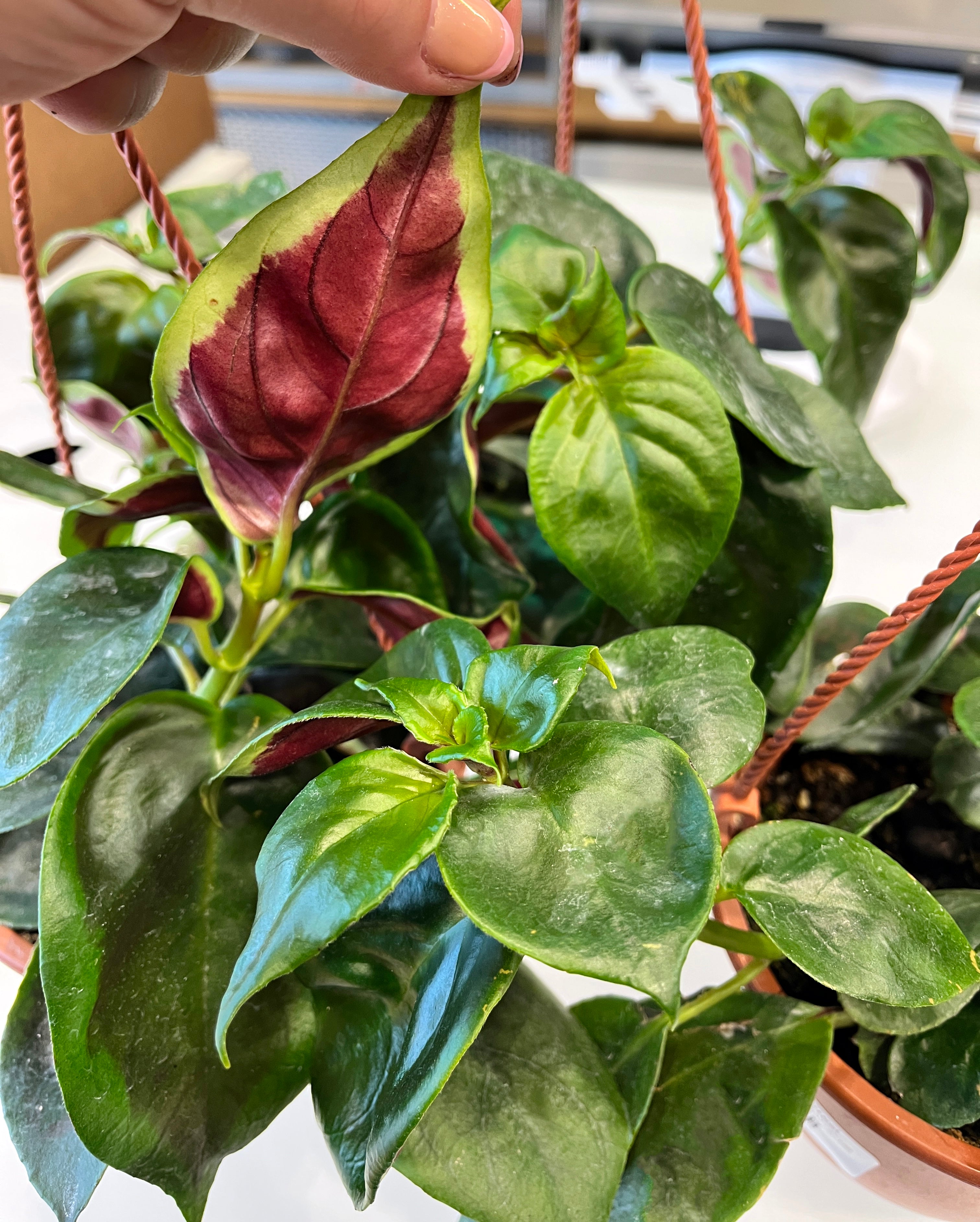
Nematanthus 'Bijou'
Nematanthus 'Bijou' loves to parade its stuff with confidence and style.
This Goldfish Plant is particularly band-worthy as the undersides of every leaf present a display of pink and red, worthy of an encore.
Nematanthus Bijou is also known for its orange flowers that resemble little goldfish! They bloom during the summer when given access to bright indirect light (at least 6 hours a day). They need above-average humidity to remain healthy and lush. Ensure you do not over-water, overheat, or expose these plants to direct sunlight, or they might go belly-up!
Fun Fact: Nematanthus Bijou is a cross between N. Wettsteinii x N. Fritschii
You think these plants are cool? Come to our store location in St. Louis Park to discover even more! Also, don't forget to check out our online plant drop each Thursday at 6pm cst for the newest plants to your home Forrest (shipping and store pick-up available)!
Until next week...... GET LOST!


